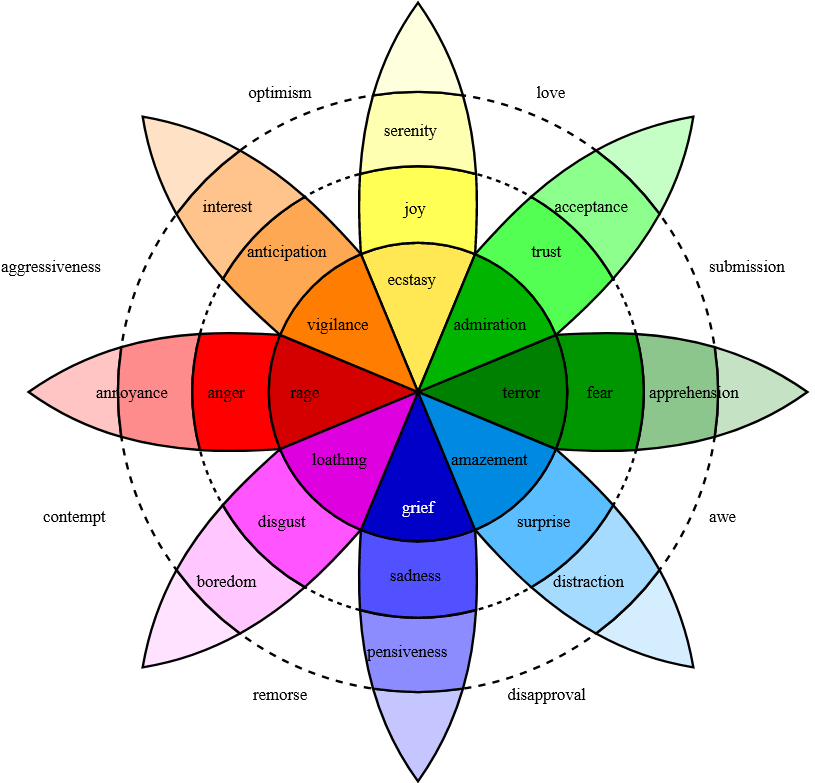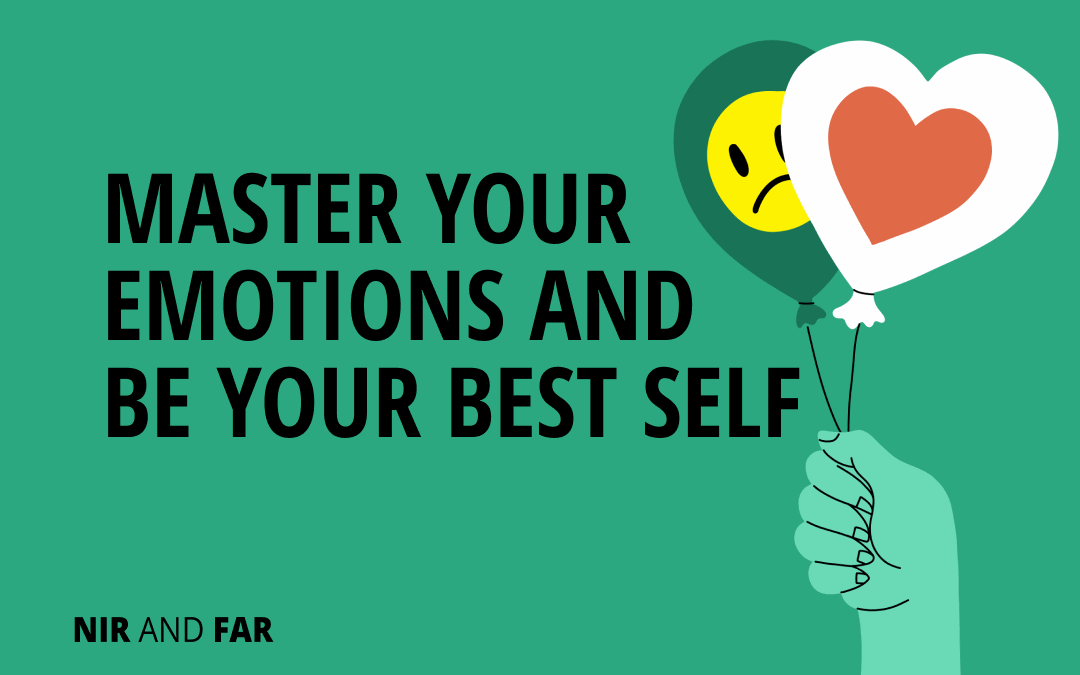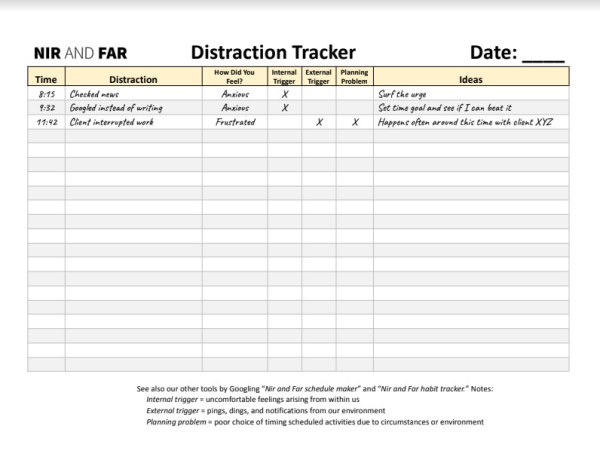Your emotions are the core of everything. Mastering them allows you to be your best self.
You won’t evolve if you ignore your emotions. I discovered the power of managing emotions when I set out to find a cure for my chronic distraction. I was struggling to the point that it was affecting my relationship with my daughter: whenever we spent quality time together, I found myself fiddling with my phone, my mind elsewhere.
Through years of research—which turned into my book Indistractable—I learned how to master my emotions as a first step to fighting distraction. But that new skill brought even more benefits I didn’t anticipate.
I gained control of my attention, learned about myself and the pattern of my emotional reactions to certain tasks, events, or stimuli, and used that information to better myself, my work, and my relationships.
Emotions are the best clues we have to understanding our values and thus ourselves. Research shows that by discerning our emotions and managing them, especially the negative ones, we can improve our psychological health, achieve career success, communicate clearly, and have stronger relationships.
Let me show you how to use Indistractable methods to track and hack your emotions and lead a happy, successful life.
Cut to the Core
Emotions are at the core of our reactions, influencing our actions in every situation.
For example, when we’re doing something that causes us to experience negative thoughts and feelings, we’re triggered to seek relief in distraction. To combat distraction, we have to face those internal triggers.
When I learned that emotions triggered distraction, I set out to build a framework that would help people navigate emotions to get back on track.
I developed a four-step method for mastering internal triggers, informed by techniques that Dr. Jonathan Bricker of the Fred Hutchinson Cancer Research Center uses to help patients stop smoking.
The first three steps can help you master your emotions in any situation. I also recommend using them to check in with your emotions twice daily in order to detect patterns.
Step 1. Look for the emotion preceding distraction (or any situation).
When you find yourself distracted or having a strong reaction, become aware of the internal trigger that is prompting it. Try to identify exactly what you’re feeling.
You might find that naming what you’re feeling is challenging. That’s normal when you first begin to look inward. One of the points of this exercise is to help you better pinpoint what you’re feeling. It will help you understand yourself and better communicate your emotions to others.
Figuring out your emotions is no easy task, partly because there are so many of them—34,000, in fact, within 27 categories. And because humans are complicated, we can have more than one feeling at once.
A great tool for identifying emotions is the emotion wheel. It names and color-codes common emotions and shows the relationship between each: for example, by placing opposite emotions directly across from one another:

Robert Plutchik’s Emotions Wheel
Step 2. Write down the internal trigger.
Write down the feeling, along with the time of day and what you were doing when you felt that internal trigger.
Keeping a log will help you link situations and resulting behaviors with their internal triggers. The better you get at noticing the thoughts and feelings that precede certain behaviors, the better you will become at managing them over time.
I created a distraction tracker for logging distraction and its three possible causes—internal triggers, external triggers, and planning problems—but you can also use it as a general-purpose emotions tracker.
Step 3. Explore the negative sensation with curiosity instead of contempt.
Shame has no place here! Hating on yourself for feeling or reacting a certain way acts as a roadblock to mastering emotions. Instead, get curious about the sensations you’re feeling.
Do you get butterflies in your stomach? A tightening in your chest? Are you hungry? Is your body temperature rising?
Here are a few techniques for navigating your emotions.
“Leaves on a stream”

Leaves on a stream method
Surf the urge
When an urge takes hold, noticing the sensations and riding them like a wave—neither pushing them away nor acting on them—helps us cope until the feelings subside.
As Oliver Burkeman wrote in the Guardian, “It’s a curious truth that when you gently pay attention to negative emotions, they tend to dissipate—but positive ones expand.”
Recategorize how you feel, aka adjust your mindset
When you feel nervous because you have a major presentation coming up, try to reconstruct that feeling as anticipation or determination. Research shows reframing your negative emotion as a positive one with similar physical symptoms can reduce the body’s stress response and help people perform better. For example, your pounding heart might result from anxiousness… but it could also mean excitement.
Talk it through with a friend
Build emotional resilience by exploring your emotions with a friend or a compassionate person. One study shows that an outside perspective can help you reframe your emotions more positively than you could on your own.
Say nice things to yourself
When used correctly, self-affirmations can help you break free from negative thought patterns and instill healthier habits. Here are 32 science-backed affirmations to be your best self.
Start Mastering Your Emotions Now
Use my distraction tracker to record your emotions twice daily and whenever you feel distraction or another strong reaction. Don’t skip taking the time to manage those emotions using Indistractable methods!
Over time, you’ll see trends emerge for which emotions arise during which events—and you’ll become more practiced in making sure those emotions don’t elicit a response that interferes with your ideal self.
Related Articles
- Schedule Maker: a Google Sheet to Plan Your Week
- Habit Tracker Template in Google Sheets
- The Ultimate Core Values List: Your Guide to Personal Growth
- Timeboxing: Why It Works and How to Get Started in 2024
- An Illustrated Guide to the 4 Types of Liars
- Hyperbolic Discounting: Why You Make Terrible Life Choices
- Happiness Hack: This One Ritual Made Me Much Happier


